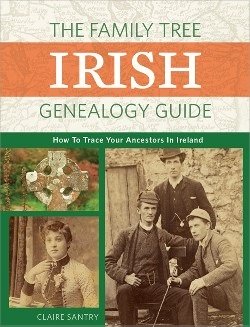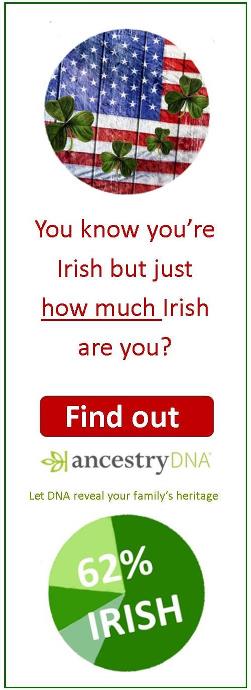- Home ›
- Finding the Townland ›
- Part II
Place of origin: the key to your Irish family history - Page II
If you're searching for your Irish ancestor's place of origin in Ireland, this page will provide you with some research techniques and strategies. It is, though, the second page of a 3-part guide to narrowing down the original home of Irish emigrants from the island, so if you haven't yet read Page I, please do so before continuing.
Your Irish genealogy research is unlikely to make much headway without three items of information: your ancestor's surname, religion and place of origin (the townland where the family lived). The first two items are probably the easiest to establish, but there are some possible pitfalls to watch out for and they are mentioned below - see the feature boxes.
For the main part, then, this page deals only with techniques and sources for finding out the name of your ancestral townland of origin in Ireland.
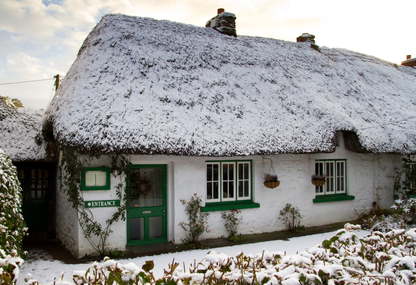 Your ancestral home was probably not either as pretty or romantic as this one in Adare, Co Limerick.
Your ancestral home was probably not either as pretty or romantic as this one in Adare, Co Limerick.Before you look to Ireland, however, you need to follow the papertrail in the country where they settled. For Irish-Americans, this means the USA. For British descendents of Irish migrants, this means Britain. And so on.
Below you'll find a listing of the generic sources. I can't provide in-depth detail and specific named collections for each possible destination around the world (the Irish went everywhere!), but I'm sure with a bit of googling you'll be able to find the correct resource in the country where your ancestor landed and/or settled.
Overseas sources for place of origin in Ireland
SOURCES
EXAMPLES
TIPS AND LINKS
Family members & friends
Parents, aunts, uncles, cousins, grandparents etc, and their friends
Start with the oldest people. Collect memorabilia and documents as you go. See Gathering Memories.
Memorabilia
Bibles, photos, letters, memorial cards, property deeds and other legal and financial documentation
Notes any placenames or other clues of place of origin.
Burial grounds
Headstone inscriptions and burial records
Are other family members not mentioned on the inscription sharing the plot? Who paid the funeral home's bill?
Newspapers
Obituaries, BMD announcments, local civic involvement, social news, 'Missing Friends' adverts.
Locate large online historical newspaper archives and local studies libraries covering the area where your ancestor settled.
Church records
Baptism, marriage and burial records
Members of the clergy sometimes annoted registers with place of origin detail.
Naturalisation and citizenship records
Declarations of intent, petitions for naturalisation
These types of citizenship papers may be scattered. Research the local historical arrangements. No such papers needed in Britain.
Military records
Records for the American Civil War; Boer War; WW1 and WW2 records
Where they survive, army records sometimes record place of birth. In US, see out Civil War widows pensions.
Vital records
Civil/state registration of birth, marriage and death
Just occasionally, an official noted a place of origin in the register margin.
Overseas sources for place of origin in Ireland
- Family members & friends
- Parents, aunts, uncles, cousins, grandparents etc, and their friends.
- Start with the oldest people. Collect memorabilia and documents as you go. See Gathering Memories.
Memorabilia
- Bibles, photos, letters, memorial cards, property deeds and other legal and financial documentation
- Notes any placenames or other clues of place of origin.
Burial grounds
- Headstone inscriptions and burial records
- Are other family members not mentioned on the inscription sharing the plot? Who paid the funeral home's bill?
Newspapers
- Obituaries, BMD announcments, local civic involvement, social news, 'Missing Friends' adverts.
- Locate large online historical newspaper archives and local studies libraries covering the area where your ancestor settled.
Church records
- Baptism, marriage and burial records
- Members of the clergy sometimes annoted registers with place of origin detail.
Naturalisation and citizenship records
- Declarations of intent, petitions for naturalisation
- These types of citizenship papers may be scattered. Research the local historical arrangements. No such papers needed in Britain.
Military records
- Records for the American Civil War; Boer War; WW1 and WW2 records
- Where they survive, army records sometimes record place of birth. In US, see out Civil War widows pensions.
Vital records
- Civil/state registration of birth, marriage and death
- Just occasionally, an official noted a place of origin in the register's margin.
Look out for migration patterns
Migration
patterns can also be extremely informative for narrowing down the geographical
origin of your Irish ancestry. Two types of migration pattern are common.
Your ancestor's surname
To trace your Irish ancestors back to Ireland, you need to accept that your family's surname is unlikely to have always been spelled the way it is now.
Surname spellings did not become standardised until the very late 19th and early 20th centuries, and when you bear in mind the high levels of illiteracy among Irish emigrants, you'll understand that the recording of their family name varied wildly.
You should keep a list of all the variant spellings as you find them. You will need to search for each variant in each record collection you check.
You may be told that Irish surnames were changed at Ellis Island. It's a myth. The officials at Ellis Island didn't create the passenger lists against which they checked the newly arrived migrants. Passenger manifestos were drawn up before the boat sailed by shipping agents' clerks who would have understood Irish accents, even if they didn't necessarily know the most likely spelling. As stated above, most of the would-be emigrants couldn't assist them with the latter, so the shipping clerk would have used the spelling with which he was most familiar or thought was correct.
Immigrants whose names changed soon after arrival in the United States probably made a decision to adapt their Irish name or adopt a new one in order to fit into their new surroundings. For this reason, a lot of Irish discarded the 'O' or 'Mac/Mc' prefix of their family name; it was a symbol of their past, which many wanted to cast off. Other surnames may have been abbreviated or changed to sound less Irish, less Catholic, or more American in response to the prevailing anti-Irish sentiment of the 19th century.
The first is called Group Migration and describes a group of relatives or neighbours leaving Ireland and arriving in their new destination together.
The
second type is called Chain Migration and occurs when one or more pioneer
emigrants set off for a new land and were followed by family and friends. Once in the new country, immigrants aimed to find employment and send money back to Ireland, often helping other members of the family to emigrate in turn.
An example of this is the migration of a branch of the Santry family from the townland of Currahevern East, County Cork, over a 40-year period. Jeremiah left Ireland in 1883 at the age of 19 and settled in Rockland, Boston.
In 1909 his 20-year-old niece, Minnie, arrived and a year after that his 23-year-old nephew William made the journey to his door. When Minnie and William's younger brother Michael (born 1891) crossed the pond four years later, he went to William's home, also in Rockland, as did brother Timothy (born 1898) in 1925.
By sticking together, many tightly knit communities emerged in America, Canada and Australia made up of people who came from the same areas in Ireland.
You can look into migration patterns by examining the neighbours of your ancestors in their adopted country. If they exist, census returns are the easiest and most accessible records for this type of investigation.
If possible, follow the records over the lives of these neighbours; just because one census records the place of birth only as 'Ireland' does not mean a more specific location is not given in a much later census or in other documentation, for example, naturalisation records.
And don't ignore immigrant children. They should be 'followed' through the census years as doggedly as the immigrant adults.
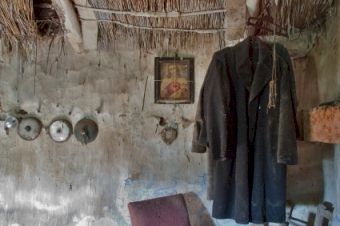 The interior of an abandoned cottage in County Clare.
The interior of an abandoned cottage in County Clare.Going 'Wide'
If you've systematically conducted your research all the way back to your immigrant ancestor's arrival in his/her new country and can still find no mention of their place of origin in Ireland, it's time to go wide, ie lateral.
 The interior of an abandoned cottage in County Clare.
The interior of an abandoned cottage in County Clare.This involves stretching out beyond immediate family and neighbours and investigating all the people your ancestors mixed with, socially, professionally, and within the extended family.
It's a big commitment, and you need to be organised and forensic in your approach. Just keep your focus on the potential reward, and enjoy learning more about the era and community circles in which your immigrant ancestor and his/her children lived.
Pay special attention to the following groups:
Friends:
Witnesses to an ancestor's naturalisation papers; witnesses to marriages and sponsors (godparents) of children on baptism; guardians of orphaned children; boarders living with your family at census times; executors.
Associates:
Individuals who arrived on the same immigrant ship as your ancestor; witnesses to wills, deeds, financial leases and settlements; business partners and work colleagues.
Neighbours:
People living in close proximity to your ancestors in census returns; people with same surname living in the same street as your ancestors in census returns; people noted in city directories at adjoining addresses to your ancestor's business.
Your ancestor's religion
Most Irish immigrants were members of one of just five religious denominations: Roman Catholic (the vast majority), Presbyterians - another large group, especially in the earlier years of Irish emigration, Church of Ireland, Methodist or Quakers (Society of Friends).
You can probably make an educated guess about the spiritual beliefs of your own ancestors based on the faith of more recent relatives, but don't get too stuck in a groove! You may come across the unexpected. Mixed marriages occurred more frequently, especially in the towns and cities, than we tend to imagine, and this might have turned the religious direction of your family line.
Also, freed from Ireland's strict and restricting codes, some new immigrants may have chosen to go with the flow of the community in which they now lived.
Look for church records of baptisms and marriages, sections of cemeteries assigned to different denominations and publications published by specific or groups of congregations.
Still can't find your ancestor's place of origin in Ireland?
If you've followed all of the above advice hand-on-heart meticulously and still can't narrow down the townland, parish or county where your ancestor lived before catching the ship, there isn't much more you can do in terms of traditional research. But don't give up.
Keep your eye out for recently discovered or newly digitised record collections and follow up any that, no matter how vaguely, hold some promise for your unique ancestral story.
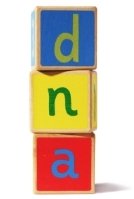
Assuming you haven't done so already, take a genealogy DNA test. Learn about DNA and upload your 'raw data' file to all the online consumer dna databases that allow you to do so. Also upload it to GedMatch (check their access terms, first).
Follow up any Matches that seem to have a link to your family ie matching surnames in their tree, and in particular any close matches ie up to four generations.
Get started on this immediately by reading the Genealogy DNA testing section of this website, all written for the lay reader. You can move on to the more expert stuff later!
Related Pages
► You know your family's place of origin? Time to move on with your Irish family history research.
► If you've narrowed down the area where your forbears lived and worked, check out these free Irish ancestry research sites for learning more about places.
► Find out more about Griffiths Valuation and other land and property records.
► Understand the administrative reasons for Irish land divisions.
► Part III - For when you know the county of origin. This page is being revised and will be published very soon (August 2022).
The Family Tree Irish Genealogy Guide
Written by the creator of Irish Genealogy Toolkit and Irish Genealogy News, 'The Family Tree Irish Genealogy Guide' is full of advice, tips and strategies to ease what can be a challenging journey.
Its guidance will be useful to any researcher of Irish heritage, but especially for the target Irish-American researcher who's struggling to work back to Ireland from their immigrant ancestor.
Publisher: Penguin
ISBN: 9781440348808 / 240 pages.
